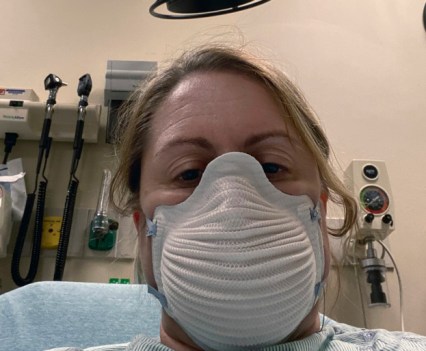
This Tuesday, March 24, 2020, photo provided by Jennifer Gottschalk shows her getting tested for COVID-19 in a Toledo, Ohio, hospital. As the environmental health supervisor for the Toledo-Lucas County Health Department, she fielded calls about COVID-19 cases from a hospital bed while fighting the disease herself. She then worked throughout her home isolation, stopping only when her coughing was too severe to talk. (Jennifer Gottschalk via AP)

FILE – In this Saturday, May 23, 2020, file photo, the image of a man wearing a face mask is reflected in a mirror as he waits inside his car to be tested for COVID-19 while volunteers take registration information in Annandale, Va. COVID-19 testing was available from Fairfax County at no cost and without a doctor’s order. Hundreds of people had lined up in cars and on foot by 10 a.m. Officials planned on testing about 1,000 people from 10 a.m. to 6 p.m. (AP Photo/Jacquelyn Martin)
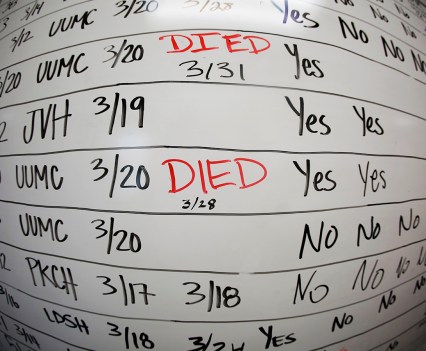
FILE – This Wednesday, May 13, 2020, file photo made with a fisheye lens shows a list of the confirmed COVID-19 cases in Salt Lake County early in the coronavirus pandemic at the county health department in Salt Lake City. Health officials later moved to tracking the cases in an online database, but the whiteboard remains in the office as a reminder of how quickly the coronavirus spread. (AP Photo/Rick Bowmer)

Dr. Oxiris Barbot (AP Photo/Bebeto Matthews)
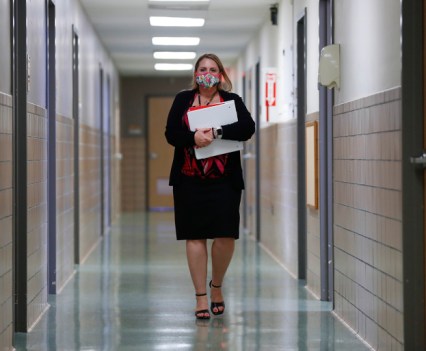
Jennifer Gottschalk, environmental health supervisor of the Toledo-Lucas County Health Department, walks down a hallway of the department’s offices in Toledo, Ohio, on Wednesday, June 24, 2020. When the coronavirus pandemic struck earlier in the year, the county’s department was so short-staffed that her duties included overseeing campground and pool inspections, rodent control and sewage programs, while also supervising outbreak preparedness for a community of more than 425,000 people. (AP Photo/Paul Sancya)

Jennifer Gottschalk, environmental health supervisor of the Toledo-Lucas County Health Department, works in her office in Toledo, Ohio, on Wednesday, June 24, 2020. “Being yelled at by residents for almost two hours straight last week on regulations I cannot control left me feeling completely burned out,” she said in mid-June. (AP Photo/Paul Sancya)
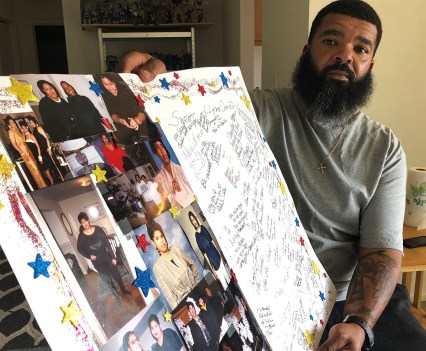
Roland Mack holds a poster with pictures and messages made by family members in memory of his sister, Chantee Mack, in District Heights, Md, on Friday, June 19, 2020. The Prince George’s County, M, public health worker died of COVID-19 after, family and co-workers believe, she and several colleagues contracted the disease in their office. (AP Photo/Federica Narancio)

A stack of paperwork detailing positive COVID-19 test results sits in a box at the Toledo-Lucas County Health Department offices in Toledo, Ohio, on Wednesday, June 24, 2020. Since 2010, spending for state public health departments has dropped by 16% per capita and spending for local health departments has fallen by 18%, according to an analysis of government spending on public health by KHN and The Associated Press. (AP Photo/Paul Sancya)
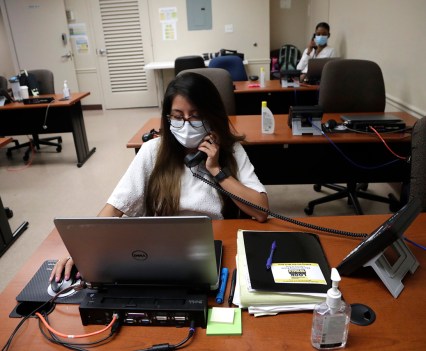
FILE – In this Wednesday, May 13, 2020, file photo, Maria Fernanda works on contact tracing at the Florida Department of Health in Miami-Dade County, during the coronavirus pandemic, in Doral, Fla. In state after state, local health departments charged with doing the detective work of running down the contacts of coronavirus patients are falling well short of the number of people needed to do the job. (AP Photo/Lynne Sladky)

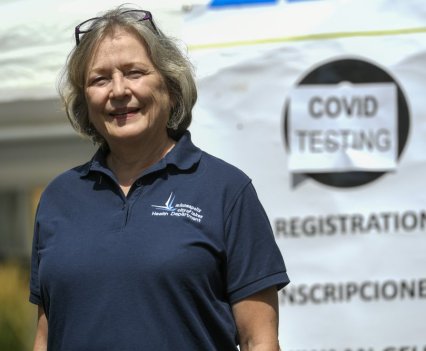
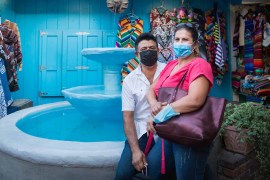
Antonio Ramos and Isabel Ceja stroll along Olvera Street in Los Angeles on Aug. 28. They support Gov. Gavin Newsom and plan to vote against the recall. (Heidi de Marco/California Healthline)
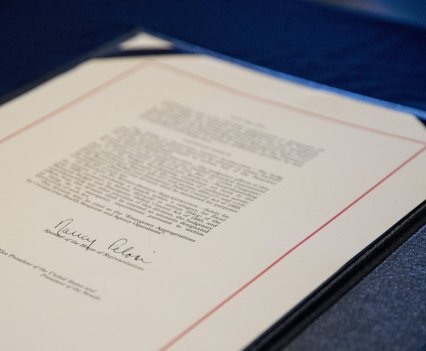
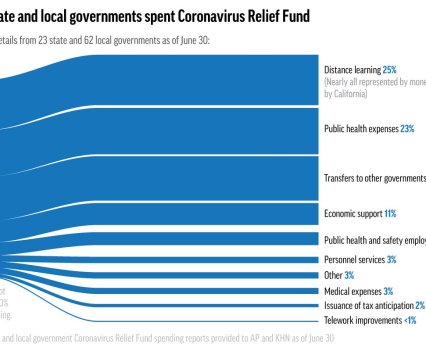
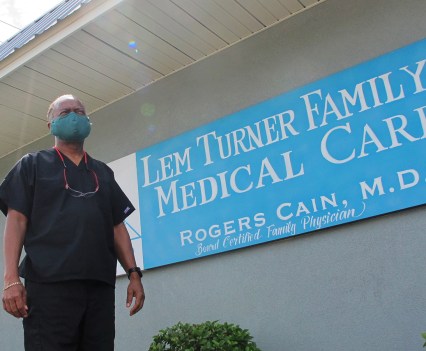
Dr. Rogers Cain’s family medical clinic in north Jacksonville, Florida, has recorded about 60 COVID cases and eight deaths as the virus has run roughshod in Florida. On one July morning, he heard from seven patients before noon who got positive results. “We are all on fire right now,” he said on July 30, 2020. “You have to have a fire department that is adequately equipped to put out the fire.” (AP Photo/Jason Dearen)
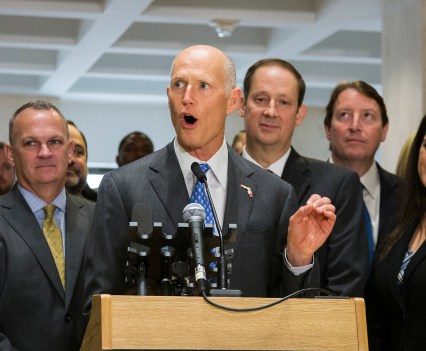
Former Gov. Rick Scott, a Republican, speaks after the end of the legislative session at the Florida State Capitol in Tallahassee, Florida, on March 11, 2018. (AP Photo/Mark Wallheiser)
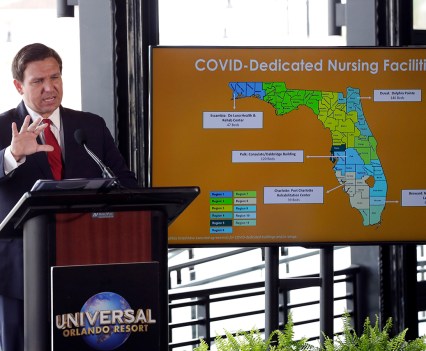
Republican Gov. Ron DeSantis speaks at a news conference at Universal Studios in Orlando, Florida, on June 3, 2020, as the theme park reopened for season pass holders. It opened to the general public two days later. (AP Photo/John Raoux)
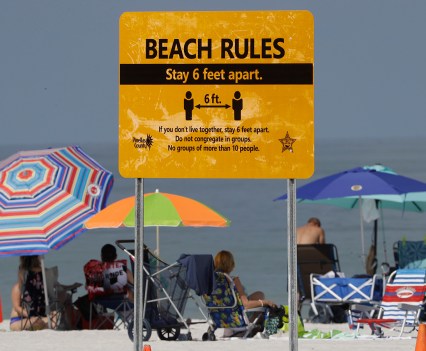
Visitors sunbathe on May 4, 2020, after Florida’s Clearwater Beach officially reopened to the public following the lifting of coronavirus restrictions. (AP Photo/Chris O’Meara)

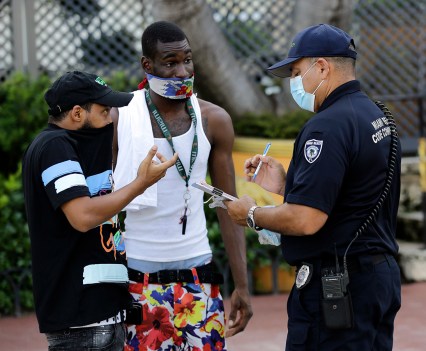
A man covers his nose with his shirt (left) as Luis Negron, a Miami Beach code compliance officer (right) talks to him about wearing a protective face mask amid the coronavirus pandemic, on Ocean Drive in Miami Beach, Florida, on July 24, 2020. Masks are mandated both indoors and outdoors in Miami Beach but not across the state. People found not wearing a mask in that city are subject to a civil fine of $50. (AP Photo/Lynne Sladky)
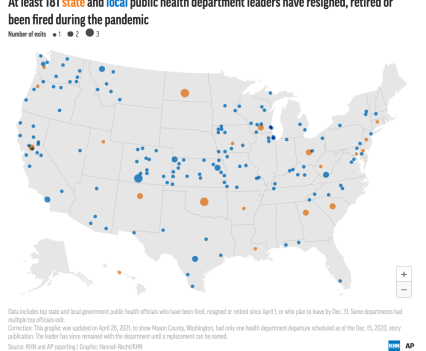

Tisha Coleman (AP Photo/Charlie Riedel)

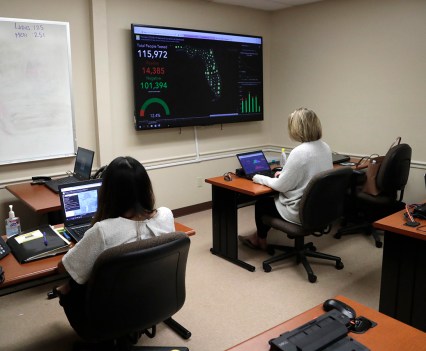
Workers perform coronavirus contact tracing from an office at the Florida Department of Health in Miami-Dade County in Doral, Florida, on May 13, 2020. Many county health offices have struggled to keep up with the influx of cases after years of staffing reductions. (AP Photo/Lynne Sladky)

Protesters carry rifles near the steps of the Michigan State Capitol building in Lansing, Michigan, on April 15, 2020, during a rally against coronavirus mitigation measures in the state. (AP Photo/Paul Sancya, File)
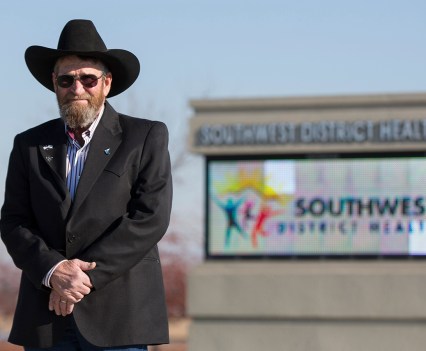
Kelly Aberasturi, vice-chair commissioner of the board of Southwest District Health, stands outside the health department office in Caldwell, Idaho, on Nov. 24, 2020. Aberasturi doesn’t support mask mandates, but he did back the board’s unanimous recommendation that people in the community wear masks. He said people who believe even a recommendation goes too far have threatened to protest at his house. (AP Photo/Otto Kitsinger)
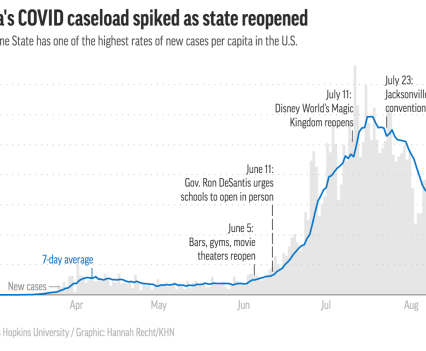
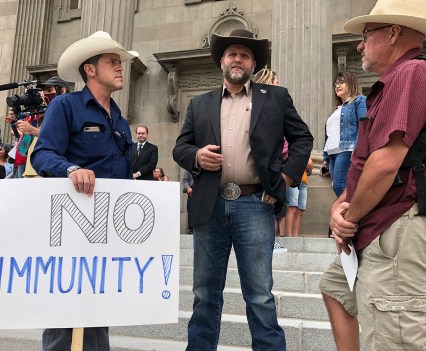
Ammon Bundy (center) stands on the Idaho Statehouse steps in Boise, Idaho, on Aug. 24, 2020, to attend a special session of the state legislature called due to the coronavirus pandemic. Bundy, whose family led armed standoffs against federal agents in 2014 and 2016, has become an icon for paramilitary groups and right-wing extremists, most recently forming a multistate network that has organized protests against public health measures. (AP Photo/Keith Ridler)

Linda Vail, health officer for Ingham County, Michigan, speaks with a colleague at their offices in Lansing on Dec. 2, 2020. Vail has received emails and letters at her home saying she would be “taken down like the governor,” which Vail took to be a reference to the thwarted attempt to kidnap Democratic Gov. Gretchen Whitmer. Even as other health officials are leaving, Vail is choosing to stay despite the threats. (AP Photo/Mike Householder)
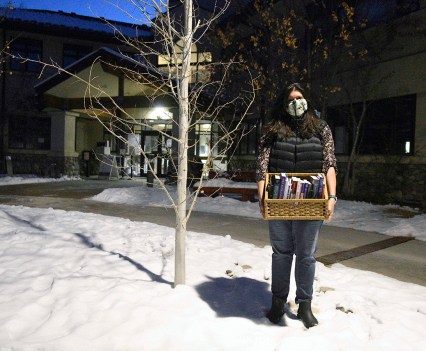
Karen Koenemann (Kelsey Brunner for KHN)